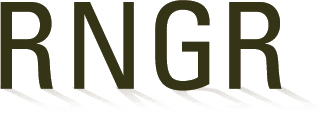Bothriochloa barbinodis (Bothriochloa)
Bothriochloa (barbinodis)
Bothriochloa barbinodis
Bothriochloa
barbinodis
Cane bluestem
Madrean Archipelago
Cane bluestem prefers calcareous loamy soils and can survive in very dry areas that receive seasonal flooding (Garner et al 2014). Found in open areas, along wash banks, and on slopes at elevations from 1,000 to 7,000 feet (Gucker 2011). It is one of the first species to disappear from unsustainably grazed landscapes, and so its presence can be a good indication of good grazing practices (Garner et al 2014). It is an important food and shelter plant for Gambel’s quail and rabbits, and it can be useful in erosion control (Garner et al 2014).
Plants
Seed
Container (plug)
Seeds are collected when they form a white fluffy fan at the top of the culms and when they readily detach from the plant. Gently collect seed tufts by hand, removing them from the culms.
Borderlands Restoration does not currently have access to equipment to completely clean grass seed, so seed cleaning for this species is minimal and just involves picking out larger sticks and other debris by hand. Orthodox storage is assumed.
Cane bluestem is typically easy to germinate with no pretreatment necessary (Gucker 2011). In lab and field settings germination rates are generally 75% or higher (Gucker 2011). Seeds germinated at 25°C (77°F) show the highest germination rates of 88-93% (Gucker 2011). Abrupt temperature changes and seeds kept at lower and higher temperatures had lower germination rates of 0-76% (Gucker 2011).
Garner, E.R., B.D., Munda, and M. Pater. “Plant Guide for Bothriochloa barbinoides (Lag.) Herter.” USDA NRCS PLant Fact Sheet. USDA-Natural Resources Conservation Service, Tucson Plant Materials Center, Tucson, AZ, 2014. Gould, Frank W. Grasses of the Southwestern United States. U of Arizona, 1951. Print. Gucker, Corey L. “Bothriochloa barbinodis.” Fire Effects Information System. U.S. Department of Agriculture, Forest Service, Rocky Mountain Research Station, Fire Sciences Laboratory, 2011. Web. http://www.fs.fed.us/database/feis/ [2017, February 7] Borderlands Restoration Network (2018). BRN Native Plant Materials Program Database. Unpublished Raw Data.
Allen-Cantú, Juniper; Claverie, Francesca; McNelis, Perin; Mount, Allegra. 2018. Propagation protocol for production of Container (plug) Bothriochloa barbinodis Plants Borderlands Restoration Patagonia, Arizona. In: Native Plant Network. URL: https://NativePlantNetwork.org (accessed 2025/10/28). US Department of Agriculture, Forest Service, National Center for Reforestation, Nurseries, and Genetic Resources.



